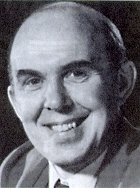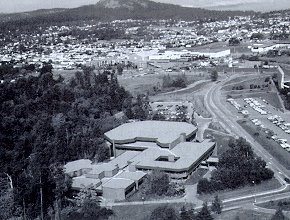| 1 | 2 | 3 | 4 | 5 | 6 | 7 | 8 | 9 | 10 | 11 |
Chapter 11: The Modern Web of Legal Education
A New Law Faculty in Victoria
Ironically, in light of what in fact transpired, Cheffins thought in 1964 that it would be impossible to implement changes of these sorts at any existing law faculty. He wrote to Malcolm Taylor, president of the University of Victoria, about establishing a law faculty at the then-new university and in 1965 moved west to take up a position as associate professor in the department of economics and political science. Cheffins clearly understood his appointment to bring with it an explicit mandate to develop a faculty of law. He expected the task to take half a decade to complete and thought himself fully prepared for the challenge facing him. Little did he anticipate the unpleasant surprise that awaited him. He recalled:
I was absolutely horrified to find that when I arrived in Victoria, the very first letter in my box, was a carbon copy of a letter which Malcolm Taylor [had] written to the Law Society of British Columbia assuring them that I was not here to start a new law faculty. . . . So almost on the first day of my arrival I felt that my position had been undercut.
This must have been a devastating blow to an individual who at mid-career had left a secure faculty position at one of Canada’s great universities, relocated his family, and suffered all the predictable stresses and disruptions of a major move in order to launch a new type of law faculty.

| Murray Fraser, founding dean of the University of Victoria law faculty. |
Despite so unfortunate an initiation, Cheffins launched into discussions about starting a new law faculty. Brian Smith, then a well-established Victoria barrister, "embraced this idea wholeheartedly" and a rapidly expanding circle of professional acquaintances expressed enthusiasm for the idea. Bill McIntyre (later appointed to the Supreme Court of Canada) and Lloyd McKenzie (later appointed to the Supreme Court of British Columbia) supported the idea. Lloyd McKenzie spearheaded efforts to develop support among the Victoria legal profession. After a good deal of effort, the creation of a law faculty was approved by the university in 1969. At that point difficulties not directly related to the issue of legal education distracted the University of Victoria for several years. In the winter of 1972–1973 support came from unexpected quarters. Alex MacDonald, the new provincial attorney-general, expressed his interest in seeing a second law faculty established in British Columbia. This was "a complete and total surprise" to Cheffins. In the spring of 1973 the provincial cabinet approved funding, the appropriate university committee was established, a dean and librarian hired, and one of Canada’s newest and finest law faculties developed at break-neck speed. The new dean, Murray Fraser, moved quickly to appoint faculty, establish a curriculum, and take all the other steps necessary to launch a major new educational endeavour. In September 1975—thirty years after the opening of the University of British Columbia law faculty and a half-century after the Victoria Law School had foundered—legal education began at the University of Victoria. The new faculty very quickly established a reputation for excellence that is highly respected both across Canada and internationally.
| The whole point of housing law schools inside universities is that law teachers should be an integral part of the university community. The outlook on the law is broadened, its larger social significance kept more closely in mind, by law teachers associating closely with teachers of the humanities and social sciences. If law is to continue as a genuinely learned profession, in the circumstances of the 20th Century when everything is seen to be related to everything else, law schools should be closely integrated with universities. —J. A. Corry, 1967 |

| The Begbie Building, home of the University of Victoria Faculty of Law, opened in September 1975. |
Copyright © 1995 The University of British Columbia Faculty of Law. All rights reserved.
Please address questions or comments to Professor W. Wesley Pue, pue@law.ubc.ca